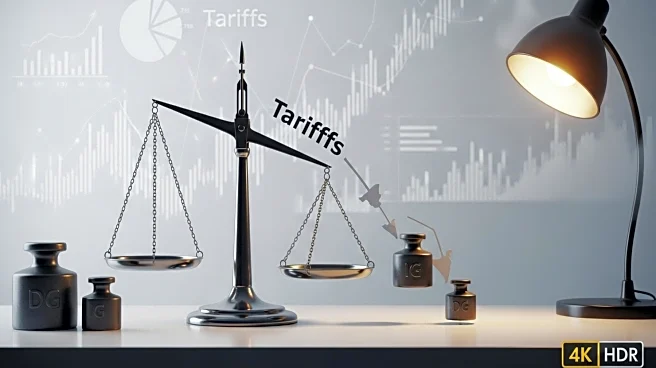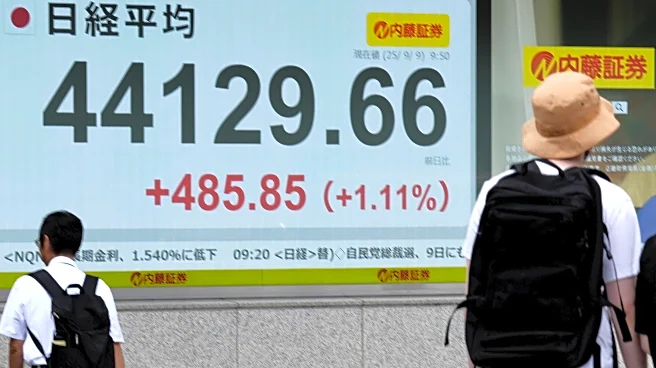What's Happening?
The U.S. producer price index (PPI) unexpectedly declined by 0.1% in August, marking the third instance of deflation this year. Wall Street economists had anticipated a 0.3% increase. The core PPI, excluding food and energy, also fell by 0.1%. This deflationary trend is likely to influence market expectations of a Federal Reserve rate cut. President Trump has publicly criticized Fed Chair Jerome Powell, urging for a significant rate reduction. Despite the deflationary data, market reactions have been muted, with slight increases in stock prices and modest decreases in Treasury yields.
Why It's Important?
The unexpected deflation in the PPI suggests easing inflationary pressures, which could impact the Federal Reserve's monetary policy decisions. A potential rate cut could affect borrowing costs, investment strategies, and economic growth. The PPI data provides insights into underlying inflation fundamentals, particularly in the services sector, which constitutes a significant portion of GDP. The upcoming consumer price index (CPI) reading will be closely watched as it may further influence the Fed's decision-making process.
What's Next?
The Federal Reserve's upcoming rate decision will be influenced by the latest inflation data, including the CPI reading. Stakeholders, including investors and policymakers, will be monitoring these developments closely. The Fed's actions could have broader implications for economic stability and growth, affecting various sectors and financial markets.













